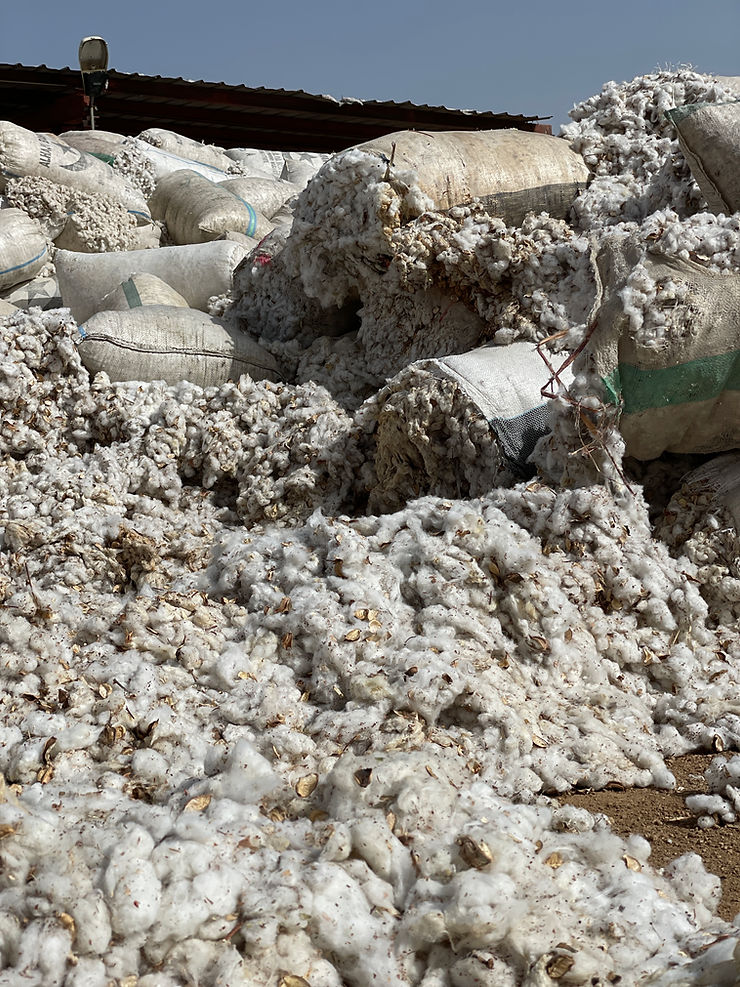Inside Nigeria’s Billion Naira Textile Industry
- Victoria Audu

- Mar 28
- 3 min read

Tucked away in the industrial hub of Kano, Nigeria, African Textile Manufacturers (ATM) is one of the last surviving textile industrial factories in the country. Founded between 1987 and 1989, the factory set out to develop various grades of organic, Nigerian-grown cotton. More than three decades later, ATM continues to push forward, but not without facing significant challenges along the way.
ATM’s process begins at the foundation of textile production—cotton farming. The company provides local farmers across Northern Nigeria with organic cotton seeds, ensuring a steady supply of raw materials. Once harvested, the cotton is bought back in tons and transported to the factory for processing.

Anthony, the Quality Control Manager at ATM, emphasises the importance of maintaining high-quality standards. “Here, we deal with 100% cotton,” he says, explaining that every batch is carefully inspected to ensure it meets industry standards. ATM’s commitment to organic cotton sets it apart from many textile manufacturers globally, where synthetic materials and blends have become the norm.
Although full-scale production at ATM officially began in 1999, the factory, like many Nigerian businesses, has had to navigate an increasingly difficult economic landscape. The cost of operations has skyrocketed, with electricity bills alone reaching a staggering thirty million Naira per month (as of February 2024).

The financial strain has led to major workforce reductions. Once employing over 5,000 workers, ATM now operates with just over 300. Despite these cutbacks, the factory remains one of the few remnants of Nigeria’s golden textile era, a period when the industry was a dominant force in Africa.

During the late 1980s, Nigeria’s textile industry ranked as the third-largest in Africa. By 1997, it had climbed to the second-largest spot, just behind Egypt. Between 1985 and 1991, the industry experienced an annual growth rate of 67%, employing about 25% of the country’s manufacturing workforce. At its peak, over one million Nigerians worked in textile production, generating more than one billion Naira in revenue for the federal government.
However, the industry’s decline in the early 2000s was swift. The combination of inconsistent government policies, rising production costs, and an influx of cheap imported fabrics led to the closure of many factories. ATM, now privately owned, is one of the few survivors of this era, continuing to operate against the odds.

Despite these setbacks, ATM remains a symbol of resilience in Nigeria’s textile industry. But sustaining production in an increasingly hostile economic environment will require more than just perseverance. Anthony, the quality control manager at ATM believes a fundamental shift in mindset is necessary. With the right support and renewed investment, Nigeria’s textile industry could once again become a thriving force in the country’s economy.
In our latest documentary, we take you inside the factory to witness firsthand how ATM continues to push forward, preserving a legacy that once defined Nigeria’s industrial strength. Watch the full documentary here.
Join us in shaping the future of African fashion. Sign Up to become a part of the Clearly Invincible fashion community and for a consultation to aid your fashion entrepreneurship journey.
Fashion Services: Illustrations | Collection Planning | Portfolio's | Consultations
Comments